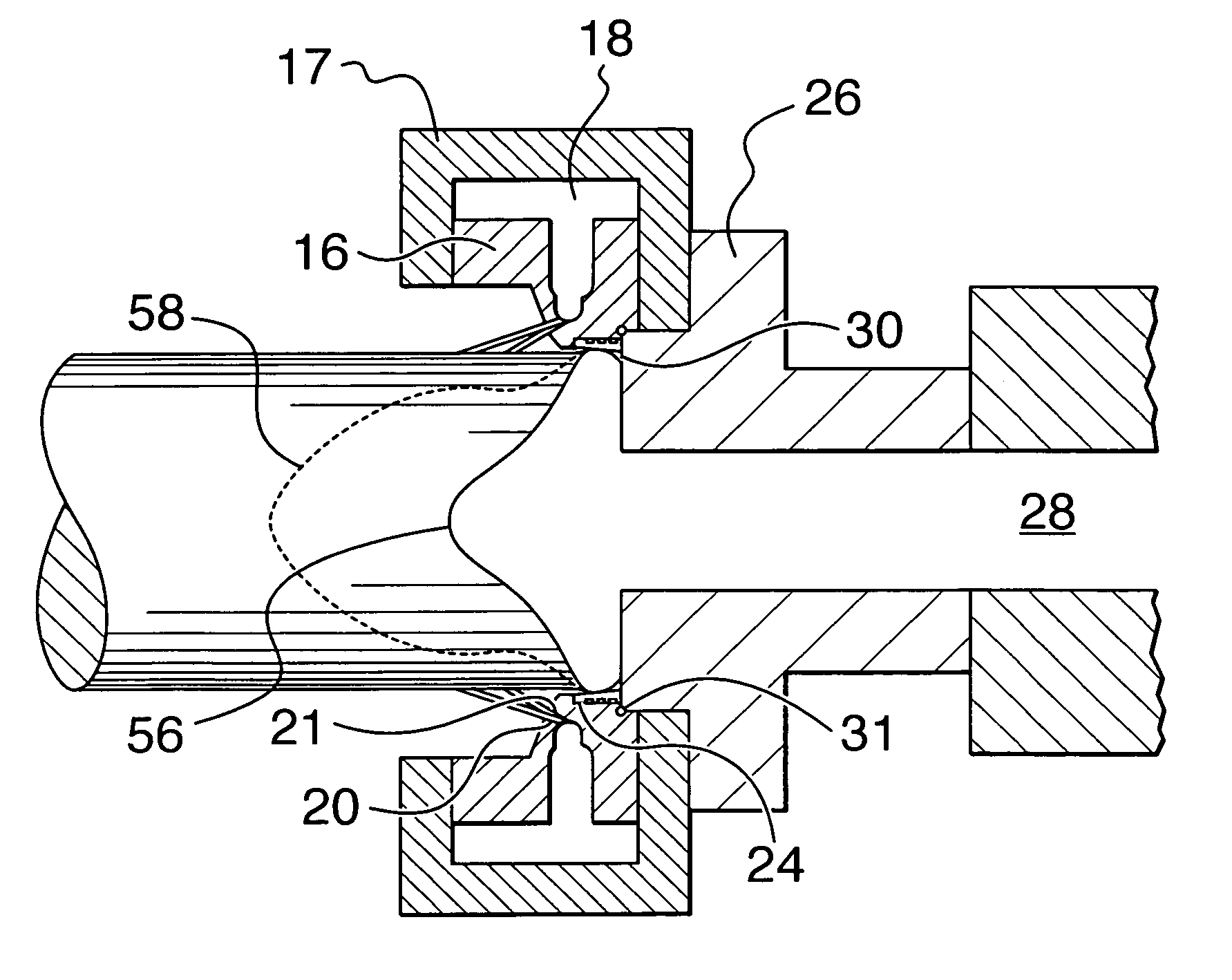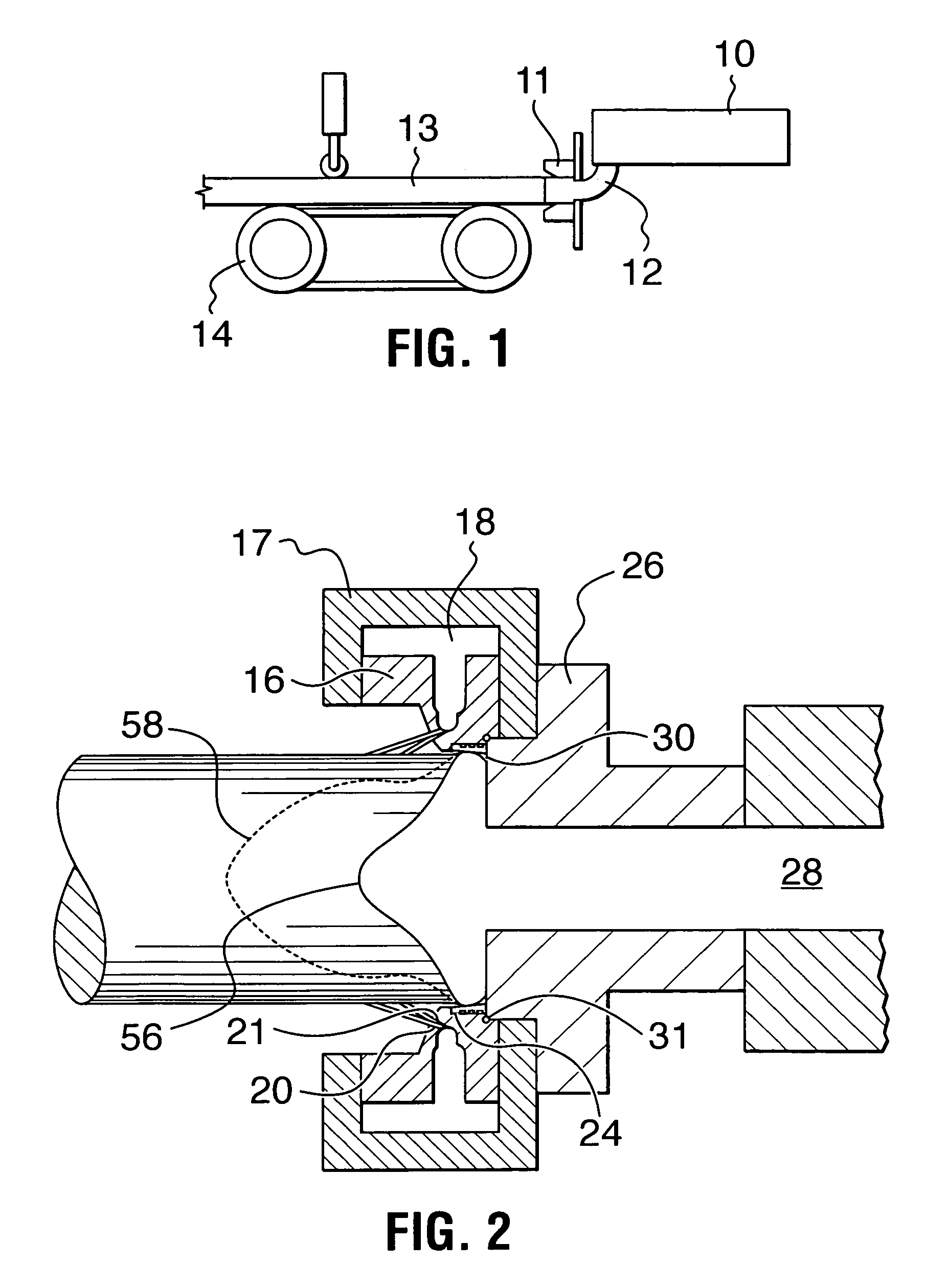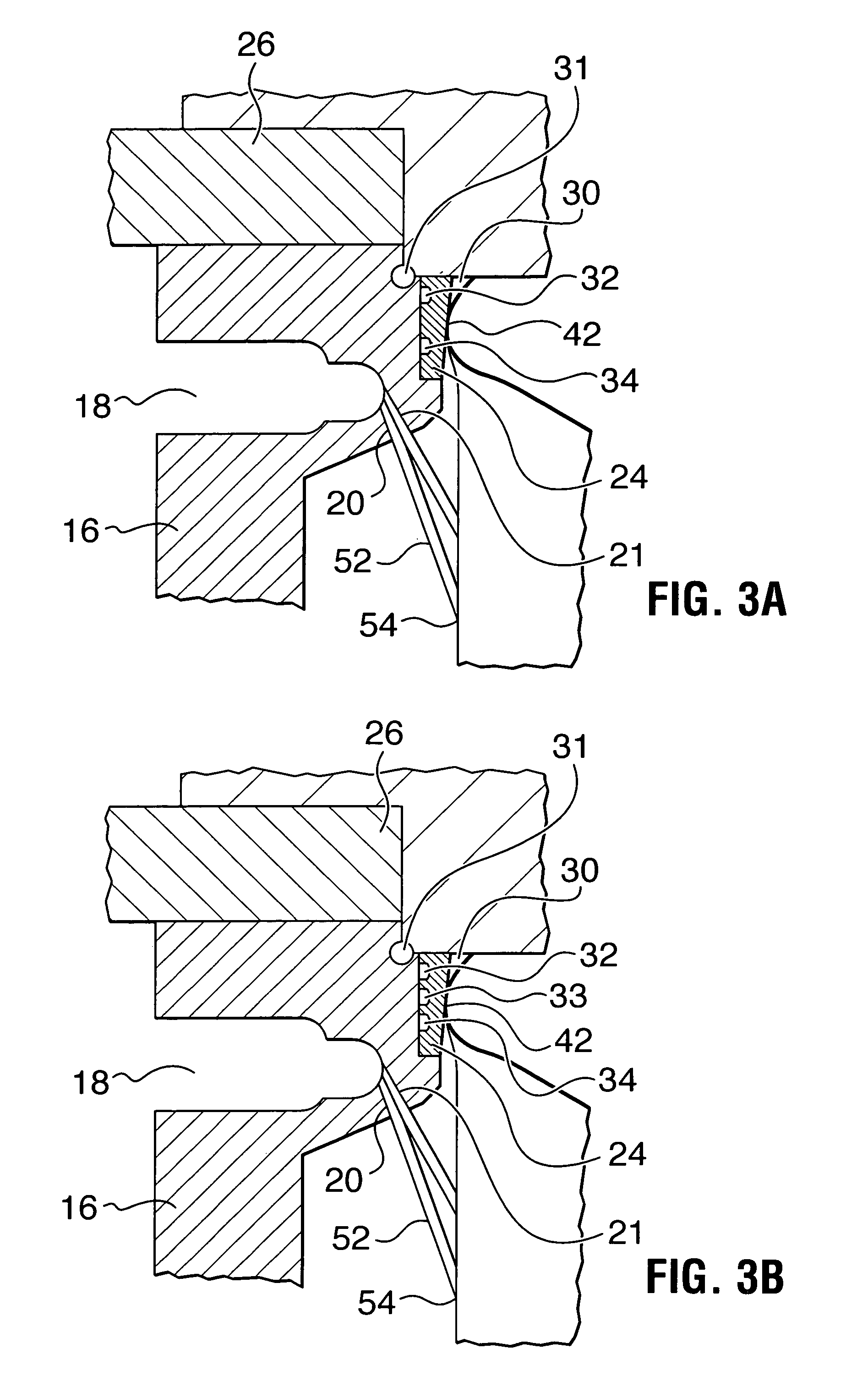Horizontal continuous casting of metals
a technology of metals and casting ingots, applied in the field of horizontal continuous casting of metals, can solve the problems of irregular surface on the cast ingot, molten metal “breakout” may occur, surface defects, etc., and achieve the effects of reducing reducing the heat flux between the metal and the mould walls, and minimizing the detrimental effect of lubricant reaction
- Summary
- Abstract
- Description
- Claims
- Application Information
AI Technical Summary
Benefits of technology
Problems solved by technology
Method used
Image
Examples
Embodiment Construction
[0035]FIG. 1 shows a typical horizontal casting mould of the type to which the present invention relates, including an insulated molten aluminum reservoir 10, an inlet trough 12 and a horizontal casting mould 11. An ingot 13 is delivered from the mould and is carried from the mould by a conveyor 14.
[0036]In FIG. 2 a two-part mould body 16, 17 is shown, in which is contained a water channels 18 fed by coolant delivery pipe (not shown) and communicating with a set of staggered coolant outlet holes 20, 21 around the periphery of the mould body.
[0037]A tapered permeable graphite annular ring 24 is mounted inside the mould body 16 so as to form an inner surface to the mould. A transition plate 26 formed from refractory material is mounted at the upstream. (or metal entry end) 28 of the mould. It has a smaller interior cross-sectional opening than the annular ring 24 thereby forming a shoulder and pocket 30 in the corner of the mould. An O-ring seal 31 is provided at the intersection of t...
PUM
| Property | Measurement | Unit |
|---|---|---|
| average cell-size | aaaaa | aaaaa |
| surface roughness | aaaaa | aaaaa |
| length | aaaaa | aaaaa |
Abstract
Description
Claims
Application Information
 Login to View More
Login to View More - R&D
- Intellectual Property
- Life Sciences
- Materials
- Tech Scout
- Unparalleled Data Quality
- Higher Quality Content
- 60% Fewer Hallucinations
Browse by: Latest US Patents, China's latest patents, Technical Efficacy Thesaurus, Application Domain, Technology Topic, Popular Technical Reports.
© 2025 PatSnap. All rights reserved.Legal|Privacy policy|Modern Slavery Act Transparency Statement|Sitemap|About US| Contact US: help@patsnap.com



